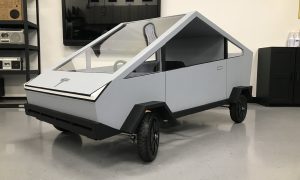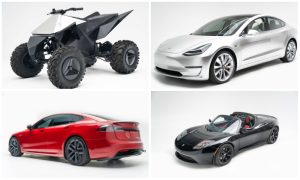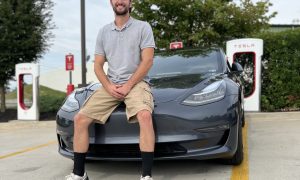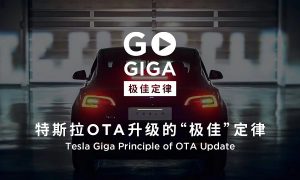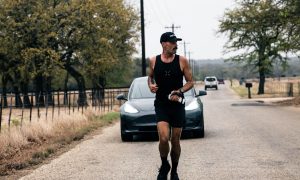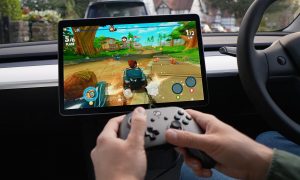Firmware
Expect to see more Tesla ‘unlockable’ features bundled into its cars
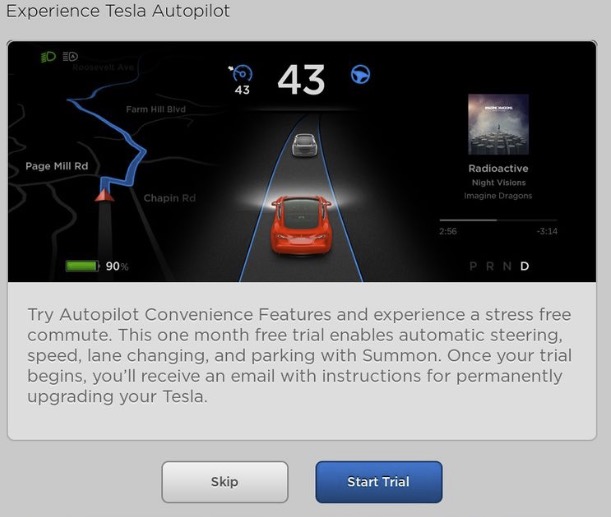
When Tesla revealed that Model S 70 owners with the 70 kWh battery could in fact unlock an extra 5 kWh for a fee bringing it to a total of 75 kWh, it sent the rest of the auto industry a loud and clear message that the company can and will continue to streamline ways to continuously improve upon its vehicles via over the air updates. It wasn’t the first time Tesla has done this and it certainly won’t be the last. Let’s look at what some of these ‘unlockable’ features are.
Upgrading a 70 kWh battery to 75 kWh
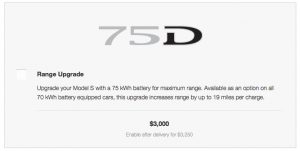 There have been some debates online about whether or not it makes sense to do the upgrade.
There have been some debates online about whether or not it makes sense to do the upgrade.
Some argue that they can “use” the bigger battery to offset long term battery degradation and enjoy the benefit at no extra cost. While it’s probably true that the larger battery will degrade even less, Tesla’s battery degradation over time is very slight. At over 60,000 miles I’ve only lost 5% of battery range which is roughly 13 miles of rated range – a negligible amount for me. Sure it would be nice to 5 kWh of extra battery, but at the end of the day the increase in range from the upgrade is relatively immaterial.
Tesla has priced this upgrade after delivery at $3,250 US, and $3,000 if you select the larger battery at the time of ordering the car. This means the battery upgrade is being priced at $650/kWh.
The base Model 70D has a range of 240 miles. The Model 75D has a range of 259 miles, 19 miles or 8% extra range from the upgrade. Another way of looking at the price is that it costs $171/mile of range. Here again I’d make the argument that most people will find an extra 19 miles pretty insignificant. There of course will be a few owners that absolutely must have the extra 19 miles, but for most the upgrade won’t make sense. Note that the 70D and 75D both Supercharge slower than the 85D and 90D cars — if you also got a boost in charging speed from the upgrade perhaps it would be more valuable.
So, why am I a fan of Tesla offering unlockable software features like this? The reason is that it allows Tesla to simplify their manufacturing and production process by creating a single version of the vehicle, while allowing the company to also roll out better functionality over time through over-the-air updates initiated by in-car purchases. Tesla is essentially creating micro-transactions with each of its upgradeable features.
I feel that the transition from 70D to 75D was was nicely executed, and it’s evident that Tesla continues to lay the foundation for a future where new hardware and new features can be gracefully introduced, while keeping recent buyers happy that they didn’t “miss out” on the latest and greatest.
Autopilot
Even before the 75D battery upgrade was introduced, Tesla had already begun including Autopilot hardware on all Model S even before the Autopilot suite of functionality was even available.
Today you can buy a Tesla with or without autopilot functionality (the feature is $2,500 when you buy the car, but $3,000 as a retrofit after delivery), however all cars from September 2014 and onwards have the hardware for Autopilot.
Tesla recently offered a free 30 day trial of Autopilot to owners that opted out of purchasing the optional feature as a way to encourage them to experience the new technology. But ultimately it hopes that these owners will pay to upgrade. Here again Tesla is fronting the costs of Autopilot hardware and making the bet that most owners will purchase the feature once they had a chance to experience it.
One such Model S owner describes his first experience with Autopilot through the trial offer.
Looking Back
Back in the early days when the Model S was first introduced, Supercharging wasn’t enabled on all vehicles. Owners had to pay extra to receive Supercharging hardware either at the time of ordering their car or as a retrofit later on. Even to this day older Tesla Model S 60 models can enable Supercharging through the company’s online store.
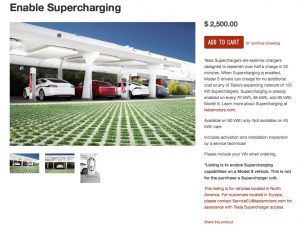 Tesla also offered a 40kWh battery version of the Model S to help Tesla make good on a promise that the base price would start at $50,000. With “only” 160 miles of rated range, the 40kWh version wasn’t very popular. To improve production efficiencies, Tesla in reality built 60 kWh versions of the car and software limited it to 40kWh. The price to upgrade from 40 kWh to a 60 kWh back then was a whopping $11,000 upgrade. But even at that price the cost per kWh was $550/kWh making it $100 lower per kWh than what they’re currently on the 70D to 75D upgrade.
Tesla also offered a 40kWh battery version of the Model S to help Tesla make good on a promise that the base price would start at $50,000. With “only” 160 miles of rated range, the 40kWh version wasn’t very popular. To improve production efficiencies, Tesla in reality built 60 kWh versions of the car and software limited it to 40kWh. The price to upgrade from 40 kWh to a 60 kWh back then was a whopping $11,000 upgrade. But even at that price the cost per kWh was $550/kWh making it $100 lower per kWh than what they’re currently on the 70D to 75D upgrade.
Summary
I fully support Tesla’s strategy of reducing the number of permutations its manufacturing line has to deal with. I also like the idea of encouraging secondary transactions and allowing people to upgrade their cars after they take delivery. Their whole approach gives Tesla a lot of flexibility with improving the vehicle over time, and allows buyers – whether money constrained, or they just don’t need an option – to delay the purchase of features until a later time when it suits their needs.
I wonder why some features like Premium Sound and XM radio haven’t gone the same route as I have to imagine the incremental costs of the hardware for those options are a lot smaller than those for autopilot or Supercharging.
I do believe, however, that the after-delivery pricing of some of these options may come down over time. Tesla has sunk costs in the hardware. If the owners don’t upgrade in year 1, why shouldn’t Tesla lower the price in year 2? Tesla stands to make no money back on their investment in the individual cars if they can’t get people to upgrade, so why not lower prices over time? While it may seem like they’re devaluing the feature, there is a strong motivation for the owner to pay sooner rather than later in order to get more years of enjoyment and use of the feature. Just as the car’s value declines over time, so should that of the features.
Firmware
Tesla mobile app shows signs of upcoming FSD subscriptions
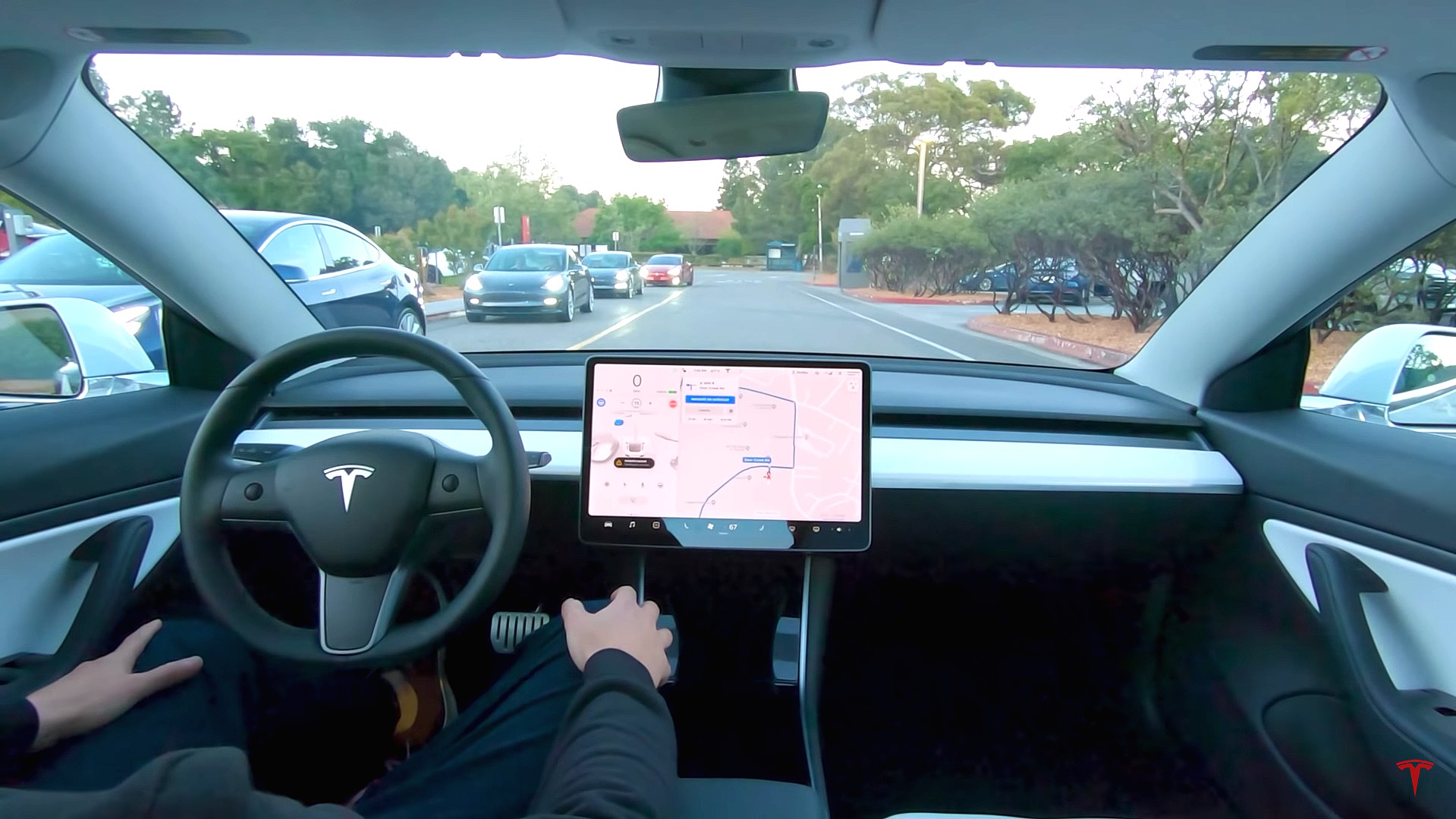
It appears that Tesla may be preparing to roll out some subscription-based services soon. Based on the observations of a Wales-based Model 3 owner who performed some reverse-engineering on the Tesla mobile app, it seems that the electric car maker has added a new “Subscribe” option beside the “Buy” option within the “Upgrades” tab, at least behind the scenes.
A screenshot of the new option was posted in the r/TeslaMotors subreddit, and while the Tesla owner in question, u/Callump01, admitted that the screenshot looks like something that could be easily fabricated, he did submit proof of his reverse-engineering to the community’s moderators. The moderators of the r/TeslaMotors subreddit confirmed the legitimacy of the Model 3 owner’s work, further suggesting that subscription options may indeed be coming to Tesla owners soon.
Did some reverse engineering on the app and Tesla looks to be preparing for subscriptions? from r/teslamotors
Tesla’s Full Self-Driving suite has been heavily speculated to be offered as a subscription option, similar to the company’s Premium Connectivity feature. And back in April, noted Tesla hacker @greentheonly stated that the company’s vehicles already had the source codes for a pay-as-you-go subscription model. The Tesla hacker suggested then that Tesla would likely release such a feature by the end of the year — something that Elon Musk also suggested in the first-quarter earnings call. “I think we will offer Full Self-Driving as a subscription service, but it will be probably towards the end of this year,” Musk stated.
While the signs for an upcoming FSD subscription option seem to be getting more and more prominent as the year approaches its final quarter, the details for such a feature are still quite slim. Pricing for FSD subscriptions, for example, have not been teased by Elon Musk yet, though he has stated on Twitter that purchasing the suite upfront would be more worth it in the long term. References to the feature in the vehicles’ source code, and now in the Tesla mobile app, also listed no references to pricing.
The idea of FSD subscriptions could prove quite popular among electric car owners, especially since it would allow budget-conscious customers to make the most out of the company’s driver-assist and self-driving systems without committing to the features’ full price. The current price of the Full Self-Driving suite is no joke, after all, being listed at $8,000 on top of a vehicle’s cost. By offering subscriptions to features like Navigate on Autopilot with automatic lane changes, owners could gain access to advanced functions only as they are needed.
Elon Musk, for his part, has explained that ultimately, he still believes that purchasing the Full Self-Driving suite outright provides the most value to customers, as it is an investment that would pay off in the future. “I should say, it will still make sense to buy FSD as an option as in our view, buying FSD is an investment in the future. And we are confident that it is an investment that will pay off to the consumer – to the benefit of the consumer.” Musk said.
Firmware
Tesla rolls out speed limit sign recognition and green traffic light alert in new update
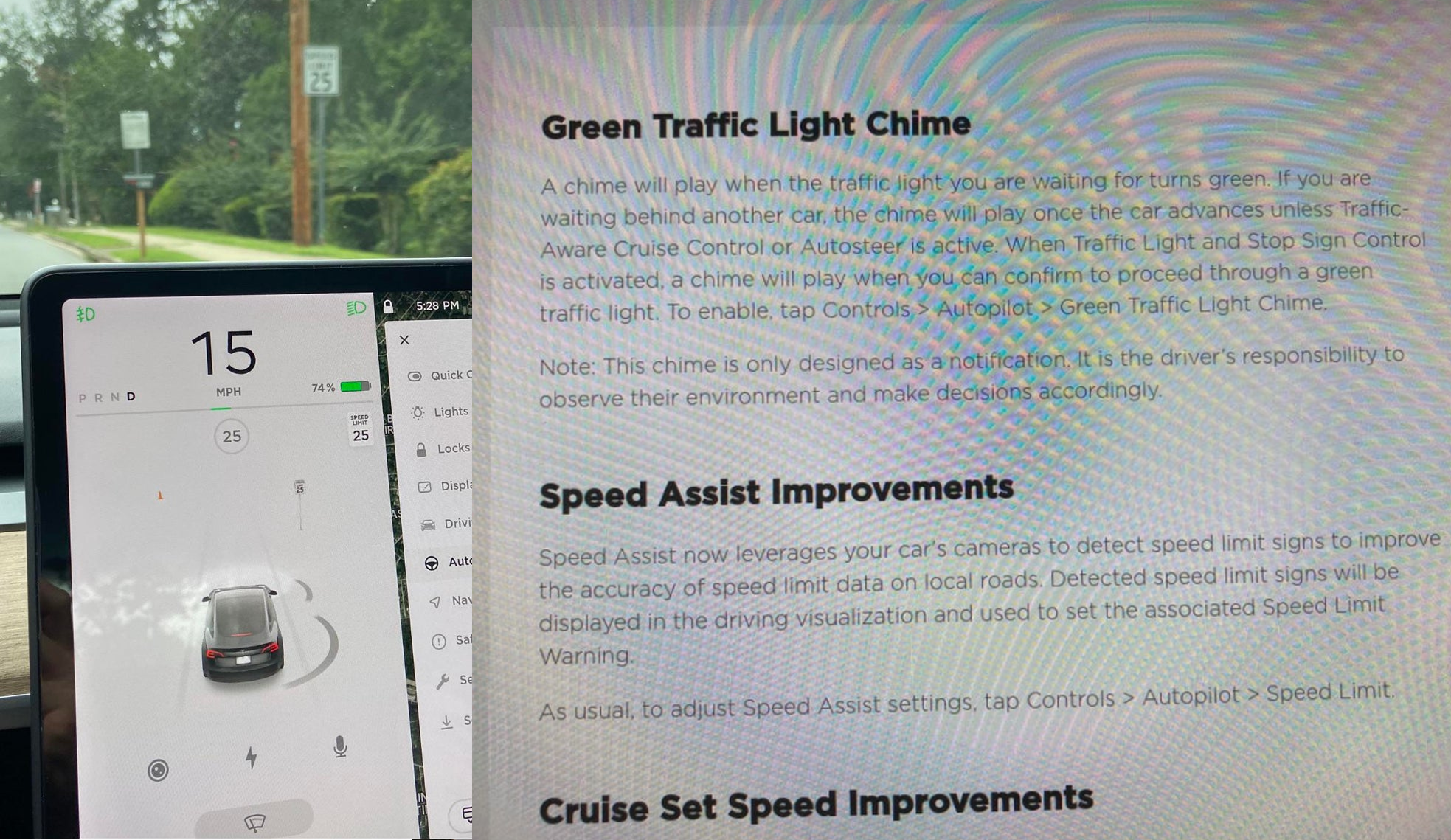
Tesla has started rolling out update 2020.36 this weekend, introducing a couple of notable new features for its vehicles. While there are only a few handful of vehicles that have reportedly received the update so far, 2020.36 makes it evident that the electric car maker has made some strides in its efforts to refine its driver-assist systems for inner-city driving.
Tesla is currently hard at work developing key features for its Full Self-Driving suite, which should allow vehicles to navigate through inner-city streets without driver input. Tesla’s FSD suite is still a work in progress, though the company has released the initial iterations of key features such Traffic Light and Stop Sign Control, which was introduced last April. Similar to the first release of Navigate on Autopilot, however, the capabilities of Traffic Light and Stop Sign Control were pretty basic during their initial rollout.
2020.36 Showing Speed Limit Signs in Visualization from r/teslamotors
With the release of update 2020.36, Tesla has rolled out some improvements that should allow its vehicles to handle traffic lights better. What’s more, the update also includes a particularly useful feature that enables better recognition of speed limit signs, which should make Autopilot’s speed adjustments better during use. Following are the Release Notes for these two new features.
Green Traffic Light Chime
“A chime will play when the traffic light you are waiting for turns green. If you are waiting behind another car, the chime will play once the car advances unless Traffic-Aware Cruise Control or Autosteer is active. When Traffic Light and Stop Sign Control is activated, a chime will play when you can confirm to proceed through a green traffic light. To enable, tap Controls > Autopilot > Green Traffic Light Chime.
“Note: This chime is only designed as a notification. It is the driver’s responsibility to observe their environment and make decisions accordingly.”
Speed Assist Improvements
“Speed Assist now leverages your car’s cameras to detect speed limit signs to improve the accuracy of speed limit data on local roads. Detected speed limit signs will be displayed in the driving visualization and used to set the associated Speed Limit Warning.
“As usual, to adjust Speed Assist settings, tap Controls > Autopilot > Speed Limit.”
Footage of the new green light chime in action via @NASA8500 on Twitter ✈️ from r/teslamotors
Amidst the rollout of 2020.36’s new features, speculations were abounding among Tesla community members that this update may include the first pieces of the company’s highly-anticipated Autopilot rewrite. Inasmuch as the idea is exciting, however, Tesla CEO Elon Musk has stated that this was not the case. While responding to a Tesla owner who asked if the Autopilot rewrite is in “shadow mode” in 2020.36, Musk responded “Not yet.”
Firmware
Tesla rolls out Sirius XM free three-month subscription
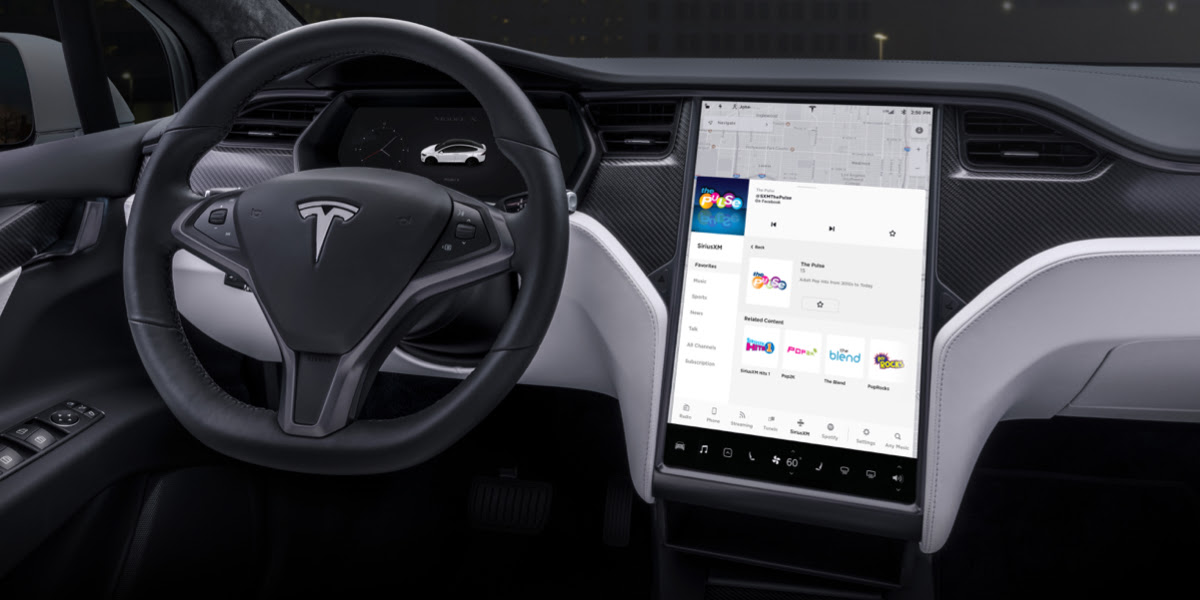
Tesla has rolled out a free three-month trial subscription to Sirius XM, in what appears to be the company’s latest push into making its vehicles’ entertainment systems more feature-rich. The new Sirius XM offer will likely be appreciated by owners of the company’s vehicles, especially considering that the service is among the most popular satellite radios in the country today.
Tesla announced its new offer in an email sent on Monday. An image that accompanied the communication also teased Tesla’s updated and optimized Sirius XM UI for its vehicles. Following is the email’s text.
“Beginning now, enjoy a free, All Access three-month trial subscription to Sirius XM, plus a completely new look and improved functionality. Our latest over-the-air software update includes significant improvements to overall Sirius XM navigation, organization, and search features, including access to more than 150 satellite channels.
“To access simply tap the Sirius XM app from the ‘Music’ section of your in-car center touchscreen—or enjoy your subscription online, on your phone, or at home on connected devices. If you can’t hear SiriusXM channels in your car, select the Sirius XM ‘Subscription’ tab for instruction on how to refresh your audio.”
Tesla has actually been working on Sirius XM improvements for some time now. Back in June, for example, Tesla rolled out its 2020.24.6.4 update, and it included some optimizations to its Model S and Model X’s Sirius XM interface. As noted by noted Tesla owner and hacker @greentheonly, the source code of this update revealed that the Sirius XM optimizations were also intended to be released to other areas such as Canada.
Interestingly enough, Sirius XM is a popular feature that has been exclusive to the Model S and X. Tesla’s most popular vehicle to date, the Model 3, is yet to receive the feature. One could only hope that Sirius XM integration to the Model 3 may eventually be included in the future. Such an update would most definitely be appreciated by the EV community, especially since some Model 3 owners have resorted to using their smartphones or third-party solutions to gain access to the satellite radio service.
The fact that Tesla seems to be pushing Sirius XM rather assertively to its customers seems to suggest that the company may be poised to roll out more entertainment-based apps in the coming months. Apps such as Sirius XM, Spotify, Netflix, and YouTube, may seem quite minor when compared to key functions like Autopilot, after all, but they do help round out the ownership experience of Tesla owners. In a way, Sirius XM does make sense for Tesla’s next-generation of vehicles, especially the Cybertruck and the Semi, both of which would likely be driven in areas that lack LTE connectivity.
-
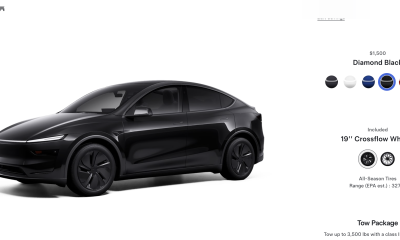
 News2 weeks ago
News2 weeks agoTesla rolls out new, more affordable trim of the Model Y Juniper in U.S.
-
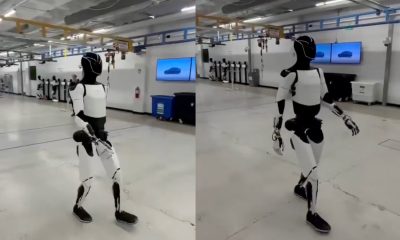
 News2 weeks ago
News2 weeks agoTesla shares Optimus’ improved walk in new update video
-
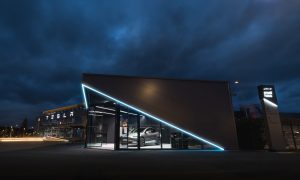
 Elon Musk2 weeks ago
Elon Musk2 weeks agoTesla Germany reports 4,935 units sold in Q1 2025
-
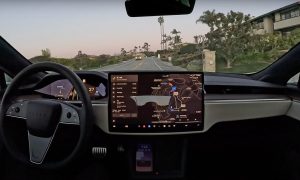
 News2 weeks ago
News2 weeks agoTesla expands Early Access Program (EAP) for early Full Self-Driving testing
-
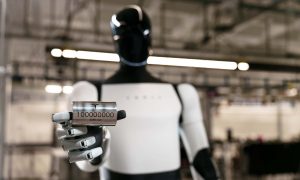
 News2 weeks ago
News2 weeks agoTesla celebrates key milestone for 4680 battery cell production cost
-
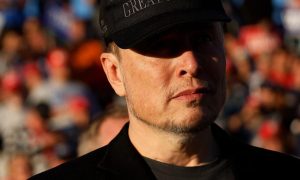
 News2 weeks ago
News2 weeks agoElon Musk will continue as DOGE adviser: VP Vance
-
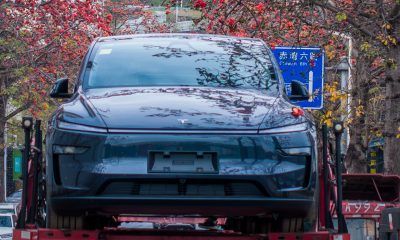
 News2 weeks ago
News2 weeks agoWells Fargo reiterates Tesla (TSLA) price target of $130
-
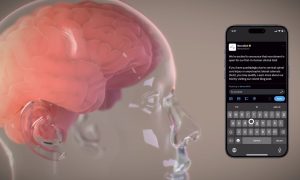
 Elon Musk2 weeks ago
Elon Musk2 weeks agoNeuralink’s Patient Registry is now open globally


